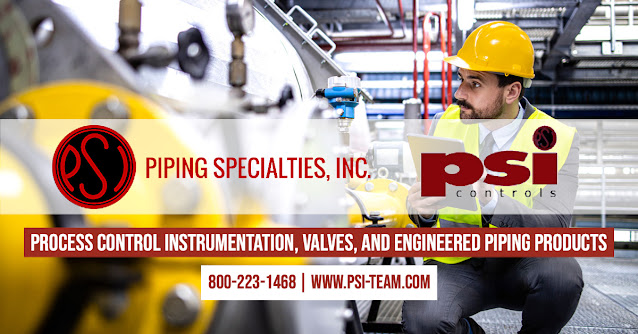Piping Specialties, Inc. / PSI Controls is a highly regarded process equipment Rep and Distributor with offices in Portland, Maine, and Danvers, Massachusetts. The products they specify, apply, and sell, including process control instrumentation, industrial valves, actuators, and engineered piping products, are vital for the process control industries of New England.
About Piping Specialties/PSI Controls Territory
New England comprises six states: Connecticut, Rhode Island, Massachusetts, Vermont, New Hampshire, Upstate New York, and Maine. The primary process industries in these states include:
- Manufacturing: Manufacturing is a significant sector in New England, including the manufacturing of machinery, electronic products, biomedical and pharmaceutical products, plastics, and rubber products.
- Food Processing: New England is known for its dairy, seafood, and specialty foods. Dairy processing is significant in Vermont, while seafood processing is prevalent in coastal states like Massachusetts and Maine. There is also a strong presence of craft breweries, wineries, and distilleries.
- Biotechnology and Pharmaceuticals: The biotechnology and pharmaceutical industries are prominent in this region, particularly in Massachusetts, home to many biotech and pharmaceutical companies.
- Microelectronics and Computer Hardware: States like Massachusetts and Connecticut have a strong microelectronics and computer hardware sector, including the manufacturing of semiconductors.
- Chemicals: The chemical industry, including specialty chemicals, industrial gases, and coatings, is also prevalent in this region.
- Energy: While not a traditional "process" industry, the energy sector, including renewable energy technologies, nuclear energy, and conventional power generation, is also significant in New England.
PSI's mission is to ensure the smooth operation of these vital sectors by offering the highest quality products backed by their expert services.
Outstanding Pre and Post Sales Engineering Support
PSI Sales Engineers bring tremendous value to their customer in New England in several crucial ways:
- Technical Expertise: PSI sales professionals know about instrumentation, valves, and other process control equipment. They can help customers understand the benefits and functionalities of different products, enabling them to make informed purchasing decisions that best meet their requirements.
- Customer Needs Analysis: PSI Sales Engineers are skilled at understanding and interpreting customer needs. They can suggest suitable products or tailor-made solutions that will meet a customer's specific needs, ensuring optimal performance and return on investment.
- Customer Education: PSI sales people are pivotal in training customers on adequately using and maintaining equipment, enhancing customer satisfaction and loyalty. This education ensures that the instruments and valves operate at peak efficiency and can prolong their life cycle and minimize downtime.
- Troubleshooting and Support: PSI Sales Engineers often provide technical support, helping to solve any problems customers may encounter with the equipment. Their ability to troubleshoot issues quickly can significantly impact customer satisfaction and retention.
Call Piping Specialties/PSI Controls with Your Next Instrumentation, Valve, or Engineered Piping Requirement
PSI takes pride in their deep industry knowledge, technical expertise, and customer-centric approach, enabling them to tailor their offerings to match our customers' needs. PSI strives to continuously provide reliable, efficient, and safe solutions, reinforcing their commitment to their customers and the broader industry.
Piping Specialties, Inc.
https://psi-team.com
800-223-1468




